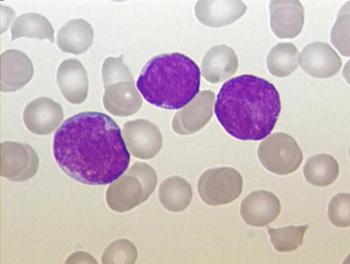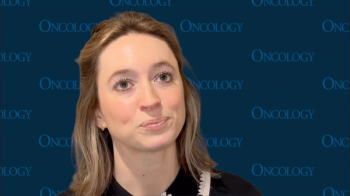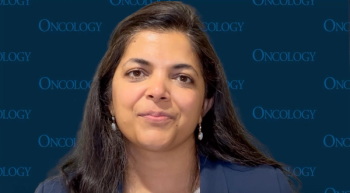
Rituximab Does Not Improve Outcomes in Primary CNS Lymphoma
Adding rituximab to MBVP induction chemotherapy does not improve outcomes for patients with primary central nervous system lymphoma.
Adding rituximab to MBVP induction chemotherapy (high-dose methotrexate, BCNU, teniposide, and prednisone) does not improve outcomes for patients with primary central nervous system (CNS) lymphoma, according to findings (
“Rituximab did not improve response rate, event-free survival, or progression-free survival in [primary CNS lymphoma],” said Jeanette K. Doorduijn, MD, PhD, of the Erasmus MC Cancer Institute in Rotterdam, Netherlands. Overall survival is immature and will become available with longer follow-up.
Post-hoc subgroup analysis suggested a possible effect among younger patients.
The response rates and survival outcomes of rituximab among patients with primary CNS lymphoma have not previously been studied in a phase III randomized clinical trial. Current practice is therefore based on findings from early-phase and retrospective primary CNS lymphoma studies, and extrapolations of survival data among patients with systemic B-cell lymphoma, Dr. Doorduijn said.
The rituximab molecule is large and has limited penetrance across the blood–brain barrier, raising doubts that it can result in therapeutic concentrations within the brain. The research team therefore conducted an international randomized phase III trial to assess the efficacy of rituximab in primary CNS lymphoma.
They enrolled 199 adults in Australia, New Zealand, and the Netherlands, age 18–70 years with newly diagnosed primary CNS lymphoma proven with brain biopsy or magnetic resonance imaging (MRI) and “unequivocal morphological or immunophenotypical evidence of CSF CD20+ large-cell lymphoma,” or CD20+ large-cell lymphoma in vitreous fluid. Eligibility criteria included WHO performance status of 0–3; exclusion criteria included concurrent systemic lymphoma, severe heart, lung, liver, or renal dysfunction, HIV-positive status, untreated hepatitis B infection, and post-transplant lymphoproliferative disorder.
Between August 2010 and May 2016, 199 patients were randomly assigned to receive induction therapy consisting of 2 cycles of MBVP (n = 100 patients) or 375 mg/m2 rituximab plus MBVP (R-MBVP arm; n = 99), followed by MRI and consolidation therapy with 1 cycle of high-dose cytarabine. Treatment was then ended for patients age 61 years or older, while those age 60 years or younger underwent whole-body radiotherapy.
The MBVP and R-MBVP were well balanced for patient age, WHO performance status, elevated LDH, and Memorial Sloan Kettering Cancer Center prognostic score. Sixty-one percent of patients in the MBVP study arm were men, compared with 48% of the R-MBVP arm.
The primary endpoint was event-free survival, defined as no complete or uncertain complete response (CR[u]) on protocol, relapse, or death.
At a median follow-up of 32.9 months (range, 3.6–79.2 months), the overall response rate was 86% for the MBVP group and 86% for the R-MBVP group. The CR(u) rate 36% and 30% for MBVP and R-MVBP, respectively. At end of consolidation treatment, the overall CR(u) rates were 66% and 68% for MBVP and R-MVBP. Among patients younger than 61 years, CR(u) was higher in the R-MBVP group (72% vs 85%), whereas among older patients, the reverse was true (60% vs 52%).
One-year event-free survival was indistinguishable for the two study arms (hazard ratio [HR], 1.00; 95% CI, 0.70–1.43; P = .99). Progression-free survival was also very similar between the groups (P = .18).
However, among younger patients, there was a marginally statistically significant trend toward better event-free survival in the R-MBVP group (HR, 0.56; P = .054).
Most patient deaths were attributed to primary CNS lymphoma (71% MBVP; 76% R-MBVP). A total of four patients died of treatment complications (three in the MBVP group and one in the R-MBVP group).
Newsletter
Stay up to date on recent advances in the multidisciplinary approach to cancer.

















































































